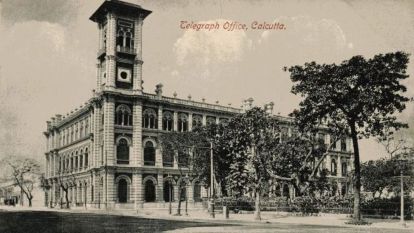
To complement our core digitisation offering, we also provide high-quality transcription services for documents that contain handwritten text. Working to your requirements, we will create keying rules to ensure that critical information in digital images can be surfaced through online searches. Our dedicated transcription teams can extract handwritten content either as part of a wider digitisation project, or from images that have already been digitised.
All transcribed output undergoes a rigorous quality assurance process to ensure that text has been accurately transcribed, and we routinely run transcribed data against our own in-house dictionaries to correct minor inaccuracies.
On average, we deliver close to three million transcribed records per month to our satisfied customers.
For records that still only exist in their original paper form, the first step is to scan or photograph them to create a high-resolution digital version. This allows for easier access to the material and prevents further wear on the original documents. Where digital images already exist, as long as the digitisation quality is of sufficiently high standard, our teams can work on them directly. The latter has become increasingly common, as collection holders revisit past digitisation projects for which, at the time, the transcription element had looked too daunting. With recent advances in technology, processes and expertise like ours, this no longer need be the case.
In collaboration with our customers, the next step is to create project-specific keying rules. We never apply a generic template as each project has its own requirements and idiosyncrasies. Once the rules have been established, our team will provide samples for review and, where necessary, make modifications and resubmit. We believe this iterative benchmark sign-off process, where clarifications and questions are encouraged, provides the best means of ensuring high levels of accuracy from the outset.
This list is by no means exhaustive. It is designed to provide a sense of what is involved and reassurance that, by drawing on our expertise together, your transcription project is in safe hands.
If you would like to know more, please contact us for a free consultation and quote.

To complement our core digitisation offering, we also provide high-quality transcription services for documents that contain handwritten text. Working to your requirements, we will create keying rules to ensure that critical information in digital images can be surfaced through online searches. Our dedicated transcription teams can extract handwritten content either as part of a wider digitisation project, or from images that have already been digitised.
All transcribed output undergoes a rigorous quality assurance process to ensure that text has been accurately transcribed, and we routinely run transcribed data against our own in-house dictionaries to correct minor inaccuracies.
On average, we deliver close to three million transcribed records per month to our satisfied customers.
For records that still only exist in their original paper form, the first step is to scan or photograph them to create a high-resolution digital version. This allows for easier access to the material and prevents further wear on the original documents. Where digital images already exist, as long as the digitisation quality is of sufficiently high standard, our teams can work on them directly. The latter has become increasingly common, as collection holders revisit past digitisation projects for which, at the time, the transcription element had looked too daunting. With recent advances in technology, processes and expertise like ours, this no longer need be the case.
In collaboration with our customers, the next step is to create project-specific keying rules. We never apply a generic template as each project has its own requirements and idiosyncrasies. Once the rules have been established, our team will provide samples for review and, where necessary, make modifications and resubmit. We believe this iterative benchmark sign-off process, where clarifications and questions are encouraged, provides the best means of ensuring high levels of accuracy from the outset.
This list is by no means exhaustive. It is designed to provide a sense of what is involved and reassurance that, by drawing on our expertise together, your transcription project is in safe hands.
If you would like to know more, please contact us for a free consultation and quote.

To complement our core digitisation offering, we also provide high-quality transcription services for documents that contain handwritten text. Working to your requirements, we will create keying rules to ensure that critical information in digital images can be surfaced through online searches. Our dedicated transcription teams can extract handwritten content either as part of a wider digitisation project, or from images that have already been digitised.
All transcribed output undergoes a rigorous quality assurance process to ensure that text has been accurately transcribed, and we routinely run transcribed data against our own in-house dictionaries to correct minor inaccuracies.
On average, we deliver close to three million transcribed records per month to our satisfied customers.
For records that still only exist in their original paper form, the first step is to scan or photograph them to create a high-resolution digital version. This allows for easier access to the material and prevents further wear on the original documents. Where digital images already exist, as long as the digitisation quality is of sufficiently high standard, our teams can work on them directly. The latter has become increasingly common, as collection holders revisit past digitisation projects for which, at the time, the transcription element had looked too daunting. With recent advances in technology, processes and expertise like ours, this no longer need be the case.
In collaboration with our customers, the next step is to create project-specific keying rules. We never apply a generic template as each project has its own requirements and idiosyncrasies. Once the rules have been established, our team will provide samples for review and, where necessary, make modifications and resubmit. We believe this iterative benchmark sign-off process, where clarifications and questions are encouraged, provides the best means of ensuring high levels of accuracy from the outset.
This list is by no means exhaustive. It is designed to provide a sense of what is involved and reassurance that, by drawing on our expertise together, your transcription project is in safe hands.
If you would like to know more, please contact us for a free consultation and quote.